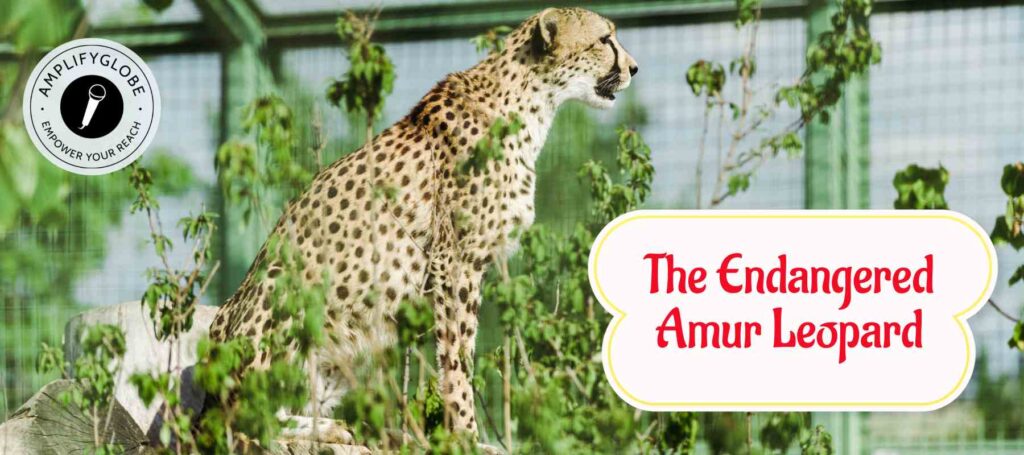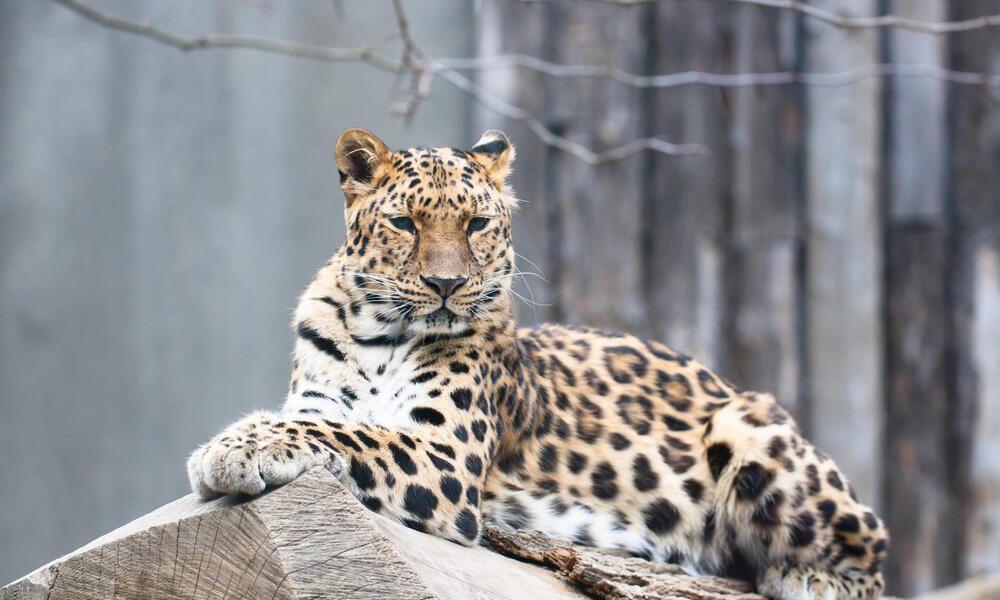The Amur leopard (Panthera pardus orientalis) is a majestic and elusive big cat native to the temperate forests of the Russian Far East and northeastern China. Known for its striking beauty, the Amur leopard boasts a coat adorned rosettes, which serves as an essential camouflage in its forested habitat. This magnificent feline has a unique history that spans thousands of years, but today, it faces an uncertain future. Classified as critically endangered by the International Union for Conservation of Nature (IUCN), the Amur leopard struggles against various threats, making conservation efforts of utmost importance to ensure its survival.
Historical Background of The Amur Leopard
The Amur leopard’s history can be traced back to the Pleistocene epoch, making it one of the oldest feline species. It once roamed vast regions of the Korean Peninsula and northern China, across the Amur River basin, and into eastern Russia.

However, extensive hunting and habitat loss significantly reduced its range and population over time.
During the early 20th century, the Amur leopard faced severe population declines due to rampant hunting for its fur and bones and loss of habitat due to expanding human settlements and agriculture. By the 1970s, it was estimated that only a handful of individuals remained in the wild, pushing the species to extinction.
Physical Characteristics of The Amur Leopard
The Amur leopard is a subspecies of the common leopard (Panthera pardus) and possesses several distinct physical characteristics that adapt it to its unique environment. These leopards are notably larger than their African counterparts, males weighing between 90 to 130 pounds (40 to 60 kg) and females weighing around 60 to 90 pounds (27 to 40 kg).

Their thick, luxurious coat helps them withstand the harsh, cold winters of their habitat. The coat features a pale golden background color, beautifully decorated large, dark rosettes, allowing them to blend seamlessly the surrounding trees and undergrowth.
Habitat and Range of The Amur Leopard
The Amur leopard’s natural habitat comprises temperate forests, including mixed forests of broadleaf and coniferous trees. They are primarily found in the Russian Far East, particularly in the Primorsky and Khabarovsk regions, as well as the Amur River basin. A small population also exists in China’s Jilin Province.
This region experiences a continental climate, bitterly cold winters and hot, humid summers. The Amur leopard has adapted to this environment by developing thick fur and retractable claws, allowing it to move stealthily through snow-covered terrain.
Threats to Survival
Despite efforts to conserve the Amur leopard, numerous threats continue to jeopardize its survival:
a) Poaching: Illegal poaching for its beautiful fur and body parts remains a significant threat. The high demand for traditional Chinese medicine and luxury products in the black market drives this illegal trade, further exacerbating the population decline.
b) Habitat Loss: Deforestation and human encroachment are among the primary causes of habitat loss for the Amur leopard. Logging, agriculture, and urban development encroach upon the species’ natural habitat, reducing their living space and prey availability.
c) Prey Depletion: The Amur leopard’s survival depends on a stable population of prey species, such as deer, wild boar, and small mammals. However, overhunting and habitat degradation also affect these prey populations, putting additional pressure on the already vulnerable leopard.
d) Climate Change: Climate change poses a significant threat to the Amur leopard’s habitat. It disrupts seasonal patterns, affecting prey migration and availability. Additionally, milder winters may reduce the thickness of snow cover, making it easier for poachers and further disrupting the leopard’s hunting abilities.
Conservation Efforts
To secure the future of the Amur leopard, various conservation organizations, governments, and local communities have initiated efforts to protect this iconic feline. Key conservation strategies include:
a) Protected Areas: Establishing and expanding protected areas, such as national parks and wildlife reserves, has been crucial in providing safe habitats for the Amur leopard. These areas are strictly monitored to prevent illegal activities and protect the wildlife within.
b) Anti-Poaching Measures: Strengthening anti-poaching efforts and law enforcement is essential to combat the illegal trade of Amur leopard products. Increasing penalties for poaching and engaging local communities in conservation can create a sense of ownership and responsibility toward protecting the species.
c) Habitat Restoration: Implementing reforestation and habitat restoration projects is crucial for ensuring sufficient prey availability and providing a stable environment for the leopards.
d) International Cooperation: Collaborative efforts among countries, especially Russia and China, are essential for effective conservation. The Amur leopard’s range spans both nations and international cooperation can improve law enforcement and conservation initiatives.
e) Public Awareness and Education: Raising awareness about the plight of the Amur leopard is vital to garner public support and funding for conservation efforts. Educational programs can help instill a sense of responsibility and empathy toward wildlife conservation.
Successes and Challenges
Conservation efforts have shown some positive results in recent years. As a result of these efforts, the Amur leopard population has slightly increased. The creation of the Land of the Leopard National Park in Russia and Hunchun Amur Tiger National Nature Reserve in China has helped provide protected areas for the species. Additionally, advances in camera trapping technology have enabled researchers to better monitor the leopards and gain valuable insights into their behavior and population dynamics.
However, significant challenges remain. Ensuring a healthy and sustainable prey population continues to be a struggle, and the ever-present threat of poaching requires constant vigilance. Habitat loss due to infrastructure development and climate change remains a pressing concern, necessitating adaptive conservation strategies.
Conclusion
The Amur leopard is a symbol of resilience and adaptability, having survived centuries of change and challenges. But today, it stands at a crossroads, its survival hanging in the balance. The responsibility to protect this magnificent creature falls upon us, the caretakers of our planet.
Through collaborative efforts, public awareness, and innovative conservation strategies, we can secure a future for the Amur leopard and preserve the biodiversity of our planet for generations to come. By prioritizing the survival of these majestic cats and the ecosystems they inhabit, we demonstrate our commitment to safeguarding the wonders of the natural world. The journey to save the Amur leopard is one that not only involves protecting a species but also reflects our ability to create a harmonious relationship between humans and wildlife, ensuring a sustainable and vibrant future for all living beings.
At AmplifyGlobe, we are dedicated to providing our viewers a profound commitment to sharing indigenous information from around the world. We recognize the invaluable cultural knowledge, traditions, and perspectives that indigenous communities possess, and we firmly believe in their right to have their voices amplified on a global stage. Find out the secrets of the following cultures: The Ainu of Japan, the Aymaraes, the Kazakh People, the Adivasi, the Sami People, and the Akha People.
Our mission is to bridge the gap between mainstream media and indigenous communities, promoting understanding, respect, and appreciation for their unique cultures and ways of life. By featuring authentic and diverse indigenous narratives, we aim to foster a deeper connection between viewers and these vibrant, ancient cultures.